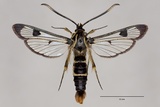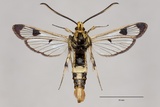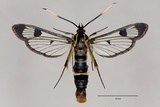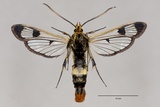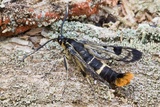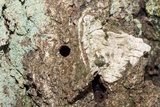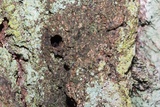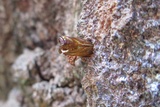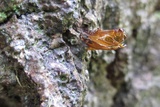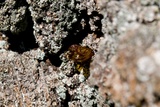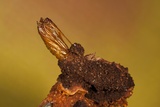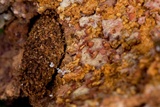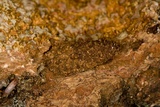Synanthedon scoliaeformis (Borkhausen, 1789) Species
Last modified: Nov. 21, 2025, 6:22 p.m.
This is a rare and local species in Belgium, known only from the southern and eastern part of the country.
Data Deficient due to a lack of sufficient data according to the IUCN Red List category for Flanders 2023.
Details
- Classification
- Family: Sesiidae > Subfamily: Sesiinae > Tribus: Synanthedonini > Genus: Synanthedon > Species: Synanthedon scoliaeformis
- Vernacular names
- Grote berkenwespvlinder (NL), Welsh Clearwing (EN), Sésie du bouleau (FR), Großer Birken-Glasflügler (DE)
- First mention in Belgium
- Lhomme L. 1946–1963. Catalogue des Lépidoptères de France et de Belgique. Volume II Microlépidoptères. (deuxième partie). — — : 489–1253. On page 513.
- Status
-
Native
Distribution
Imago
S. scoliaeformis is a large species (25–35 mm) that can be recognised by the extensive transparent areas and the colouration of the anal tuft (orange-brown in males and brighter orange in females). The antennae are black but with pale yellow scales distally. This is especially striking in the females in which almost half of the antennae is almost white. Dorsally, the abdomen has 2 yellow bands. The proboscis is, as in all species of this genus, well developed and functional.
The adult males are attracted quite well to a pheromone developed for this species.
Egg
The egg is brown and has a white net-shaped mesh on the surface.
Caterpillar
The caterpillar is off-white and has a brown neck-shield, typical of Sesiidae.
Bionomics
The female deposits the eggs on the bark of old Betula trees, often near old exit holes or on cankerous swellings. On such trees, the trunk is no longer smooth and white, but dark brown-black, rough and deeply fissured. Often, the same tree is used for many years resulting in a so-called "breeding tree".
The young larva lives between bark and wood and feeds on the cambium sap of the tree. The caterpillar winters in a silken cocoon: a hibernaculum. In the second year, the larva enlarges the gallery. Often there is only one rather short gallery that is made mostly just inside the bark and not into the wood, and is typically flat and broad. After a second hibernation, that again takes place in a white silken cocoon, the larva enlarges the gallery a little bit to typically about 7 cm. Non used parts of it are often filled with moist dark brown frass and the larva lives in a black and very wet environment caused by the copious amount of sap. Generally in May, the caterpillar constructs a gallery towards the outer surface of the bark leaving only a thin layer of bark, separating it from the outside world. Directly underneath the future exit hole, a strong and firm cocoon is constructed from dark brown wood-grains from the bark. This cocoon is lined at the inside with spun silk. On hatching, the pupa works its way out through the covering lid or pushes it aside and hatches subsequently. As usual, the exuvium remains partly in the bark for some time.
Flight periods
The adults fly between late May and mid-July.
Observed on
- Host plant (species):
- Betula pendula and Betula pubescens
- Host plant (genera):
- Betula
The monophagous larva bores between the bark and wood of old Betula trees.
